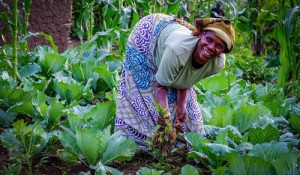 Land is the foundation of life and humanity cannot survive without it. However, we chose to take it for granted, mismanaging fertile soils and millions of trees. Is there any hope to wake up to a land degradation free world? Click here to learn more
Land is the foundation of life and humanity cannot survive without it. However, we chose to take it for granted, mismanaging fertile soils and millions of trees. Is there any hope to wake up to a land degradation free world? Click here to learn more
 Land is the foundation of life and humanity cannot survive without it. However, we chose to take it for granted, mismanaging fertile soils and millions of trees. Is there any hope to wake up to a land degradation free world? Click here to learn more
Land is the foundation of life and humanity cannot survive without it. However, we chose to take it for granted, mismanaging fertile soils and millions of trees. Is there any hope to wake up to a land degradation free world? Click here to learn more
According to the International Food Policy Research Institute (IFPRI), the global hunger index of Nepal in the year 2015 was 22.2 indicating a serious problem of food security. Additionally, majority of the farmers in the country have less knowledge on the suitability of different production methods under the climate change scenarios across a wide array of ecological as well as socio-economic contexts. Hence, the production of major food crops is likely to reduce in the days to come.
Various studies suggest that improving farmers’ standard of living is the most effective way to adapt to climate-related threats and shocks. For example, a study conducted among food insecure and food secure farmers in Kenya showed that poorer farmers were not investing in improved farm management practices, because they were entirely focused on activities that contribute to their household food supply. Food secure farmers, however, discussed goals related to children’s education, purchasing lands, and other long-term investments.
Agricultural production systems therefore need to tailor in the direction of higher productivity and production stability in the face of climate risk. This is possible when production systems are more resilient, robust, and highly efficient in utilizing locally available resources and inputs. Here are some systems to address the challenges
 According to the International Panel on Climate Change (IPCC), food insecurity is expected to rise between 15-40 percent by the year 2050. Furthermore, a policy brief by the World Agroforestry Centre highlights that smallholder farmers find it hard to innovate and invest in better management systems especially when they are preoccupied with finding other means of survival that are less costly and will take shorter time to achieve the desired benefits. It is therefore imperative that our agriculture and the food system is reformed to increase resilience to the impacts of climate change and other shocks that arise including: escalating food prices, deforestation and depletion of natural resources. Here are some suggestions on how to counter the issue
According to the International Panel on Climate Change (IPCC), food insecurity is expected to rise between 15-40 percent by the year 2050. Furthermore, a policy brief by the World Agroforestry Centre highlights that smallholder farmers find it hard to innovate and invest in better management systems especially when they are preoccupied with finding other means of survival that are less costly and will take shorter time to achieve the desired benefits. It is therefore imperative that our agriculture and the food system is reformed to increase resilience to the impacts of climate change and other shocks that arise including: escalating food prices, deforestation and depletion of natural resources. Here are some suggestions on how to counter the issue
 Sub-Saharan Africa continues to suffer from a major energy deficit, with hundreds of millions of people lacking access to electricity and clean cooking fuels. There is a great need for innovative mechanisms that can help families access clean and affordable energy. The Carbon Initiative for Development (Ci-Dev) is one such mechanism. A $125 million fund with a pipeline of 14 pilot projects in Africa, Ci-Dev will help improve living standards and sustainable energy through results-based finance. Along the way, it will generate valuable lessons in how reducing greenhouse gas emissions can generate tangible development benefits for local communities, like cleaner air, improved safety, and financial and time savings. These lessons can help in the delivery and scale up of innovative climate finance business models.
Sub-Saharan Africa continues to suffer from a major energy deficit, with hundreds of millions of people lacking access to electricity and clean cooking fuels. There is a great need for innovative mechanisms that can help families access clean and affordable energy. The Carbon Initiative for Development (Ci-Dev) is one such mechanism. A $125 million fund with a pipeline of 14 pilot projects in Africa, Ci-Dev will help improve living standards and sustainable energy through results-based finance. Along the way, it will generate valuable lessons in how reducing greenhouse gas emissions can generate tangible development benefits for local communities, like cleaner air, improved safety, and financial and time savings. These lessons can help in the delivery and scale up of innovative climate finance business models.
 Late last year the world reached a landmark agreement on climate change in Paris, a fundamental pivot toward a zero-carbon and climate-resilient world. However, key steps lie ahead to bring the agreement to fruition:
Late last year the world reached a landmark agreement on climate change in Paris, a fundamental pivot toward a zero-carbon and climate-resilient world. However, key steps lie ahead to bring the agreement to fruition:
 The world economy is moving in a low-carbon direction, drawing investors to carbon-intensive sectors. This is attributed to innovations that lower the price of renewable energy much faster than anticipated. The cost of solar panels for example has had an 80% decrease since 2008, and solar and wind energy can now compete on cost with fossil fuels in many regions worldwide. This has translated to a drastic market shift with new clean power capacity exceeding that of new fossil fuel capacity, and this is expected to continue in coming years. According to research from Corporate Knights, 14 funds holding more than $1 trillion in assets could have saved $22 billion had they shifted investments from the highest carbon companies to those that receive at least 20 percent of revenues from environmental markets or clean energy.
The world economy is moving in a low-carbon direction, drawing investors to carbon-intensive sectors. This is attributed to innovations that lower the price of renewable energy much faster than anticipated. The cost of solar panels for example has had an 80% decrease since 2008, and solar and wind energy can now compete on cost with fossil fuels in many regions worldwide. This has translated to a drastic market shift with new clean power capacity exceeding that of new fossil fuel capacity, and this is expected to continue in coming years. According to research from Corporate Knights, 14 funds holding more than $1 trillion in assets could have saved $22 billion had they shifted investments from the highest carbon companies to those that receive at least 20 percent of revenues from environmental markets or clean energy.
Its therefore time for companies and investors to make 2016 a ‘year of green finance’ by putting efforts to reduce emissions on their priority list for investment and risk management. Green banks are already successfully leveraging private capital in a number of countries and proving that such investments can be profitable. For instance, the UK Green Investment Bank expected to earn taxpayers a return of 10 percent in 2015, while China and Brazil provided low cost and long-term debt for renewable energy. However, much work still lies ahead and public capital must play a key role. without financing, the upfront costs of clean energy can deter investors and obscure the future cost advantages from lower fuel and operating costs.
Click here for the full article